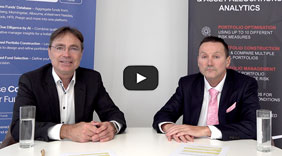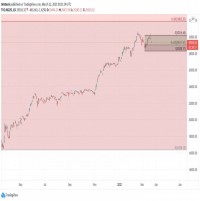|
Bailey McCann, Private Equity Strategies After 2008, the last place many investors would consider investing are banks. However, according to StoneCastle Partners, a New York-based asset management firm, the community banks that made it through the crisis, may well represent some of the cleanest assets in the market today. “As a pet project in the late 1990s, I put together a white paper looking at community bank failures. According to that data, community banks failed less than anyone believed but there is a cognitive bias. The worst year in history for community bank failures was 2010, when the rate was 2%, so I thought either I was crazy or there was an opportunity here,” explains Joshua Siegel, managing principal of StoneCastle Partners, in an interview with Private Equity Strategies. Siegel took his data to ratings agencies like Fitch and had them verify his findings. Once they did, he started looking more into investments in community banks and founded StoneCastle in 2003. The firm currently manages approximately $5.1bn in assets. “Community banks on average are about $300m in size and only make about $3m in profits off that. So there is barely a middle market. The investment community at large really doesn’t understand this space, and thinks they are very high risk, which is great for me and a few others that do invest in them.,” he says. Community banks overall have seen a bit of consolidation, there were approximately 14,000 community banks in the US in the 1970s. That number dropped to 9,000 by the 1990s and now sits just over 6,000. Of that 6,000+ only about 500 are publically traded and the remainder are privately held. Some observers attribute that to acquisition by large banks and bank failures, but one of the key drivers is age. “The average senior staff of a community bank is 60 or older, the average age of the board of directors is 70 plus. Not many people are running back to Kansas to run the bank, so if they don’t have a succession plan in place, they are going to want to sell out,” Siegel says. “A lot of that is that its just not as much fun to run a bank, you used to be a leader in the community. Now there are regulatory costs, in the US and internationally, Basel III, for example may have implications for community banks too. The Consumer Financial Protection Bearu is making it very hard to lend to consumers, and capital raising within the community is much harder.” Merger accounting is also getting tricky for small banks. Siegel explains that through purchase accounting, banks now have to price at fair market value, which can have an effect on how banks look before and after a merger even if they are healthy. There is also the possibility that the largest banks dump credit, and offer high savings rates to get community banks out of the market and then go back to business as usual. “It would take very little effort for the top five or ten money center banks to do this, and there’s nothing legally to stop them, it’s more of an ethical question. There would be a huge uproar if they did it and it should be watched. Thankfully Congress and regulators are very aware of this risk and are making efforts to support community banks.” Even with those headwinds, Siegel says, community banks will always have a place in large part because they make the bulk of US small business loans and other loans the economy needs to function. “With the regulations as they are, big banks like Bank of America, simply can’t afford to make small farm loans anymore. Since 1980 the dollar has increased 2.8 times, while the largest banks have grown 20 times There’s only so much more growth they can get and it’s not going to be in small ticket loans.” He notes that the technology consumers have come to expect from big banks like remote deposits, branchless banking, and slick online portals is also coming down in cost to deploy. Community banks are likely to embrace that technology as a value add instead of a trade off for personal service the way big banks have. “We support strong banks that want to acquire the tired. That’s how the community bank sector is going to grow and take market share. They can afford to do it, and there is no replacement for the services they offer. When we approach banks, management, market, balance sheet have to be in place - in that order. Management matters most. We look at whether they are invested in their community, do they have good credit, if they are involved in local organizations. It’s really a local disgrace issue, if they head of the bank is involved in the community he’s not going to want to go to church and explain how he lost money in derivatives.” Geography is also a factor. “You can have a fortress balance sheet, but if the community risk is too high, say everyone is employed at the one plant in town that’s a red flag. I might still be interested depending on capital, liquidity, and emerging factors in that economy,” he says. Seigel is believes the US may see more consolidation of community banks over the next 3-10 years driven by the factors outlined above and that the opportunity set is nationwide. StoneCastle has made investments in 49 states so far. “We still have three banks that have been around since the war of 1812. Many banks are over 70 years old. They’re boring, sure, but 59% of the loans to small businesses and local economies come from community banks they build businesses. That’s what keeps me coming back to work every day.”
| |
|
This article was published in Opalesque's Private Equity Strategies our monthly research update on the global private equity landscape including all sectors and market caps.
|
Private Equity Strategies
Dealmakers Q&A: StoneCastle Partners Eye Community Banks |
|





 RSS
RSS











